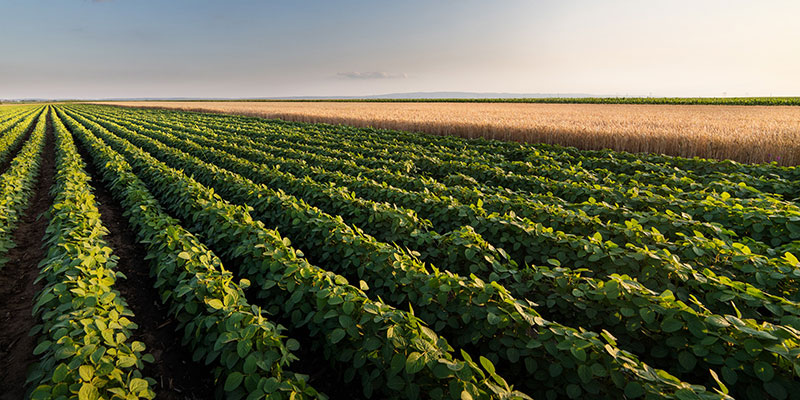A good example of water consumption is water that ends up in agricultural crops.
Paying attention to the differences can help us as we work toward water sustainability
As we look forward to a future with ever-scarcer fresh water, we’re paying more attention to our water footprints. Water sustainability requires keeping track of just how much water is being used, which can present some challenges, including with terminology.
For example, water withdrawal, water use, and water consumption are three related but discrete concepts. What are the differences, and why do they matter?
- Water withdrawal is the total water taken from a water resource. Although sometimes little distinction is drawn between water use and water withdrawal, using the two terms synonymously is misleading because not all water taken from surface or groundwater reaches the user.
- Water use describes water withdrawn from a water source and used, even if most of it is returned to the source. Typical uses include thermoelectric-power cooling, public supply, irrigation, domestic use, or industrial processes. If a user withdraws 1,000 gallons from a source, the user’s water use, therefore, remains 1,000 gallons even if 900 gallons is returned. Thinking of water use as the volume of water an entity needs to function makes water use a useful gauge for demand.
- Water consumption, on the other hand, would be the 100 gallons the same user does not return to the source (although if it is returned to a different watershed, it is considered interbasin transfer, not consumption.) Water can be consumed through evaporation or transpiration, or it could end up in products or crops, or be ingested by people or animals. Although it may return to the global water cycle, it is water no longer immediately available for use.
Water consumption, therefore, is an important gauge of water scarcity and human impact on water supplies. Agricultural irrigation, for instance, accounts for 70% percent of global water use worldwide, but 50% of it evaporates into the atmosphere, transpires through plant leaves, or remains in food products. Therefore, half of agricultural irrigation water is consumed.
Understanding Water Stress
Together, water use and water consumption data help us understand water stress. The World Resources Institute derives a baseline water stress indicator by measuring total yearly water use by the municipal, industrial, and agricultural sectors as a percentage of the total water available annually once all upstream water consumption has been deducted.
A great deal can be done to maximize water use and cut water consumption across sectors. For example, Fluence’s Water 360 full water cycle solutions, for instance, incorporate a full range of membrane, biological, and other processes to maximize water at each stage of use between intake and outfall.
Water Waste
Much of the water withdrawn by public water utilities never reaches users. In fact, the normal range of conveyance losses, or loss through leakage, is 10 to 20%. Some systems lose as much as 50% of the water they withdraw, a figure that highlights just how significant the difference between water withdrawals and water use can be.
Aging, leaky infrastructure is a huge crisis that is coming to a head in the United States. Many of the nation’s water pipe networks and treatment plants will be reaching the end of their service lives within approximately 20 years, and measures of water withdrawal compared to water use can help us understand the extent of the problem.
Decentralization, or placing smaller plants at the point of need, may help address conveyance losses, also known as non-revenue water. Modular equipment, including Fluence’s NIROBOX™ and Aspiral™, lends itself to smaller, decentralized systems that can shorten pipelines and reduce the chance for leakage. Keeping pipe networks local means smaller, standard pipe gauges can be used, making pipe maintenance less burdensome.
Cutting water withdrawals and consumption, and optimizing water use are good for the planet, populations, business, and ESG profiles. Fluence’s flexible Water Management Services use PPP, BOO, and BOOT financing arrangements, giving our clients the benefits of up-to-date treatment solutions with no upfront investment or long-term operations and maintenance. Contact the experts at Fluence to find out how.

